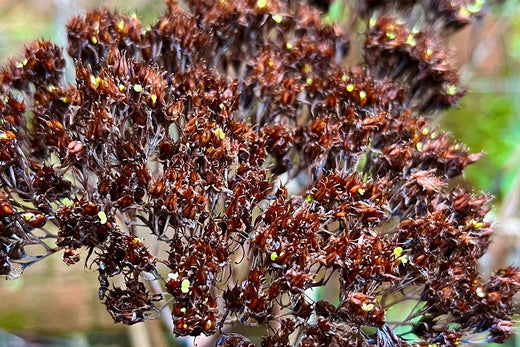Vivipary

We noticed an example of life in miniature this week as we cut back some storm damaged perennials in the flower border. With their minute green cotyledons stark against the brown of the decaying flowers, tiny seedlings were germinating in the old heads of the Sedum (now Hylotelephium, but you know…).
This was a great example of vivipary - the development of seeds before they detach from the parent. With care the industrious gardener can transfer these seedlings and bring them on in the protection of a greenhouse.
We’ve come across vivipary before. It’s commonly seen in grasses, strawberries, and tomatoes. We often spot it on teasel on our walks around the local lakes. There are some benefits to plants with this process. Mangroves, in particular, benefit from germinated seedlings forming into dart-like structures that drop down, penetrating the muddy surface below and enabling them to establish quickly.
In other plants, seedlings have a head start and can gain advantage, especially in harsh or competitive environs. Spider plants produce plantlets that can be left on the parent plant until they develop roots. Kalanchoe and Bryophyllum species develop baby plants along their leaf edges that can be harvested and transferred into individual pots.
We left our seedlings where they were to show visitors later on in the day. It’s fascinating that despite the cold and snow, nature keeps moving forward, an invisible tide, pushing slowly forward with quiet determination whatever the weather.







